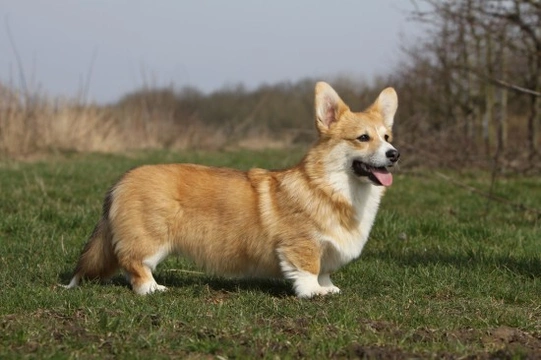
Pembroke vs Cardigan Welsh Corgi: Key Breed Differences
The Welsh Corgi is a small herding dog originating from Wales. The term “Corgi” means “small dog” in Welsh, a fitting name for these compact but spirited companions beloved for their loyal and lively personalities. Famously, Queen Elizabeth II has been known to keep several Pembroke Welsh Corgis, often seen alongside her at royal residences and estates.
If you're considering a small, intelligent, and energetic dog as your next pet, the Corgi is a breed definitely worth discovering. Though their popularity has waned since their peak, both Cardigan and Pembroke Welsh Corgis remain popular pets across the UK, bred responsibly by enthusiastic breeders.
The Two Distinct Welsh Corgi Breeds
The Welsh Corgi comes in two distinct breeds: the Cardigan Welsh Corgi and the Pembroke Welsh Corgi. Each has a unique history, appearance, and temperament reflecting their different origins within Wales.
Cardigan Welsh Corgi: Characteristics and History
The Cardigan Welsh Corgi is the older of the two breeds, with origins possibly dating back as far as 1200 BC when they were brought to Wales by the Celts. They were primarily bred for herding cattle and other livestock and also served as protectors of family homes and helpers in hunting.
Physically, Cardigans are slightly larger and more robust, standing about 10-12 inches tall and weighing up to 30-38 pounds. They have large, rounded ears and a long, fox-like tail that extends naturally from the body, without curling. Their body structure is sturdier and more solid compared to the Pembroke.
Cardigan Welsh Corgi Coat and Colours
The Cardigan's coat is thick double-layered, comprising a dense undercoat and a rougher topcoat, weather-resistant and ideal for outdoor work. Their colours are very diverse, including sable, brindle, red, black with tan points, and the unique merled patterns in blues or brindles. White markings are common around the neck, chest, feet, and face.
Pembroke Welsh Corgi: Characteristics and History
The Pembroke Welsh Corgi arrived later in Wales, brought in around 1107 AD by Flemish weavers, settling primarily in Pembrokeshire. They are linked ancestrally to Nordic Spitz-type dogs, giving them a slightly different body shape and temperament.
Pembrokes are smaller and lighter, weighing around 25-30 pounds, with height between 10-12 inches. Their ears are more pointed and upright and their tails are characteristically short or naturally bobbed—once commonly docked, which is now discouraged to promote natural welfare.
Pembroke Welsh Corgi Coat and Colours
Pembrokes typically display red, sable, fawn, or black with tan tri-colour coats, always featuring white markings on the chest, feet, and sometimes a collar. A charming and distinctive feature is the "fairy saddle" — white flashes on their shoulders, linked to Welsh folklore that Corgis were the steeds of fairy folk.
Temperament, Exercise, and Activities
Both Corgi breeds are intelligent, active, and highly trainable, but there are temperament differences to note. Pembrokes tend to be more outgoing, energetic, and playful. They thrive with regular exercise and enjoy outdoor activities such as agility, flyball, and obedience competitions.
Cardigans have a calmer but alert temperament, often a little more reserved around strangers, making them excellent watchdogs without being overly vocal. Both breeds need mental stimulation and daily physical activity to maintain wellbeing.
Health and Responsible Ownership
Both breeds are generally healthy with lifespans of around 12-15 years. Responsible breeders test for common inherited conditions such as hip dysplasia, progressive retinal atrophy, and degenerative myelopathy.
Pembrokes also have a slightly increased risk of intervertebral disc disease and epilepsy. When choosing a Corgi puppy, seek reputable Pembroke Welsh Corgi breeders or Cardigan Welsh Corgi breeders who prioritise health, temperament, and ethical breeding.
Understanding these breeds' exercise needs, health risks, and personality traits can help you provide a loving forever home with the best quality of life for your Welsh Corgi companion.



